6 Ways Anthem Isn’t Like Destiny
Combat
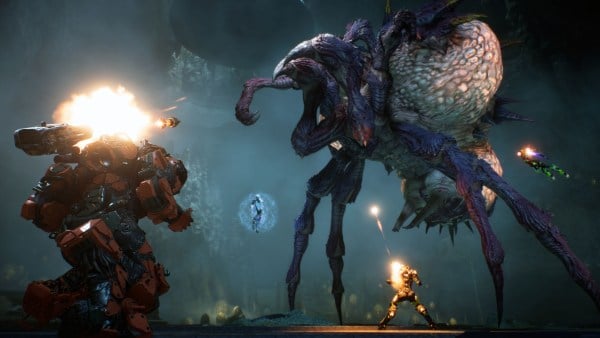
Ever since BioWare announced Anthem, the internet was overflowing with takes comparing it to Destiny. Such comparisons aren’t necessarily incorrect, but they improperly convey what makes a particular game noteworthy. While there are certainly things that they have in common, it is far from Destiny’s brother from another digital mother, and here are a few examples why.
Destiny and Anthem play to their respective studios’ strengths. Destiny was clearly made by a company that defined modern first-person shooters, while Anthem takes a page from Mass Effect: Andromeda’s fast-paced third-person psychokinetic shootouts that emphasize ability synergy.
Destiny’s combat is similar to Halo’s, complete with regenerating shields. However, Destiny also includes rechargeable energy barriers and healing fields, grenades that might as well be magic, and the occasional super ability that completely wrecks house.
Since the cooldowns for all these abilities are fairly long, most of Destiny’s combat focuses on passive abilities and swapping between three weapons to maximize damage, especially when elemental shields and weaknesses are involved.
Anthem, in contrast, concentrates less on gunplay and more on active abilities with short cooldowns.
While players can carry two guns in Anthem, they can deck out their characters with a variety of abilities that vary from class to class, including homing missiles, flamethrowers, acid grenades, and actual magic spells that can synergize to form devastating, explosive combos.
Moreover, Anthem includes actual, honest-to-god crafting. The closest Destiny gets to crafting is the Lost Prophecy Verses quests from Destiny 2, whereas Anthem lets players collect crafting materials and smash them together into new weapons and abilities.
Yes, players can craft abilities in Anthem, but that comes with a trade-off: abilities are looted or crafted, not unlocked. If players don’t, for example, find or craft the Storm’s summon fire elemental ability, they will never get to use it.
On the Destiny side of things, the Warlock can call down lightning or throw sticky grenades made of solar energy at any time, cooldowns notwithstanding, so long as the respective abilities are unlocked.
Destiny’s combat may play out like a solid FPS game, but Anthem adds a new dimension to combat thanks to the power of flight.
The game’s Javelins, which act as Anthem’s classes, can fly and hover to weave around incoming projectiles, as well as close the gap (or widen it) between players and enemies.
Moreover, the Storm Javelin is built around this mechanic since its shields receive a sizable boost while hovering. It’s the small things that count.
6 Ways Anthem Isn’t Like Destiny
Microtransactions
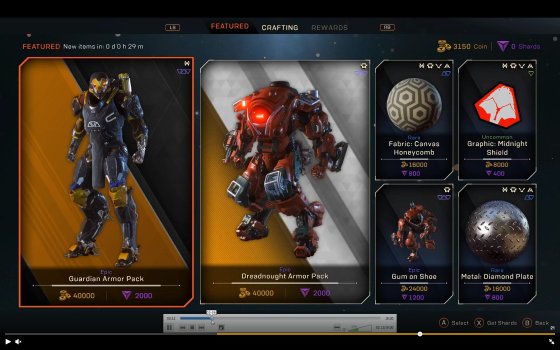
Let’s address the elephant in the room right out of the gate: Destiny has loot boxes and a season pass, Anthem has neither. That said though, the differences between Destiny and Anthem’s microtransactions are more nuanced than that statement.
Since it doesn’t feature any loot boxes like Destiny, Anthem includes a cash shop full of customization options, including emotes, shaders, and armor pieces. Players can find plenty of customization options as mission rewards and loot drops, but some are bought through the cash shop.
While Destiny offers universal loot boxes at set prices that contain everything from flaming hoverbikes to holographic trombone emotes, Anthem’s cash shop offerings vary in price depending on the item. Moreover, current prices are much more reasonable than the early leaked prices, but they’re still more expensive than Destiny’s loot boxes.
Furthermore, each Destiny loot box includes several items of varying rarity, so odds are players will get something they like should they buy one.
Even though the quickest way to obtain loot boxes and cash shop items is to pay for them with real-world cash, players can still earn loot boxes in Destiny through grinding.
After gamers reach max level, the game rewards players who “level up” again with a free loot box, which means players get a shot at obtaining fancy new shaders and ships after an hour or two of dedicated enemy-killing and event-completing.
Also, any items you don’t want can be dismantled into a special currency (Bright Dust), that can be exchanged for things you do want.
Meanwhile, players can grind in-game coins to purchase Anthem’s microtransactions, but these cash shop items cost tens of thousands of coins, so players have to grind and farm for hours on end to earn enough coinage for one cash shop item.
So, while Destiny forces players to participate in digital gambling if they want certain customization options, the game’s loot boxes are cheaper and relatively painless to earn by comparison.
6 Ways Anthem Isn’t Like Destiny
Classes
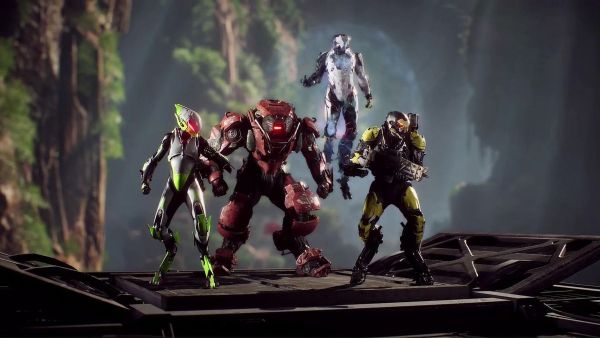
Both Destiny and Anthem cover traditional RPG classes, such as the tank, rogue, mage, etc. in their own way but that’s where the similarities start and end.
Anthem adds the jack of all trades Ranger into the mix. Plus, Head of BioWare Live Service Chad Robertson tweeted the team behind Anthem wants to add even more Javelins later.
More importantly, Anthem doesn’t lock players into one class. In Destiny, players who try a class and hate it either have to suck it up or make a new character, but Anthem lets players change classes by simply donning a new Javelin suit before departing on a mission.
Because that’s all Anthem’s classes are: specialized suits of armor, which makes any and all statements comparing Javelins to Iron Man suits make even more sense since Tony Stark has several garages worth of specialized suits.
However, while Anthem gives players the flexibility to customize four distinct classes with unique abilities, Destiny offers more in-class variety by splitting each one into three unique subclasses, each with its own ultimate ability, grenades, and specializations.
In other words, some Destiny Warlocks can dodge midair and swing a flaming sword, and others can shoot giant balls of darkness and blink in and out of reality, whereas all Anthem Colossi are lumbering, bipedal tanks that can’t dodge. Speaking of the Colossus, it is the only class that gets to wield the grenade launcher and minigun weapons.
While you might assume the same would apply to its Destiny counterpart, the Titan, every class in Destiny has access to the same roster of firearms. Meanwhile, the Colossus sacrifices the dexterity to fire a pistol and SMG for the power to lug heavy artillery.
Furthermore, Anthem doesn’t include any abilities that restore health, whereas Destiny’s Warlock is indispensable for that very skill. Then again, health pickups bleed from enemies in Anthem, so one must wonder if a healing class would be redundant.
6 Ways Anthem Isn’t Like Destiny
Multiplayer

Even though Destiny is an online game where players can tackle world events alone or with friends, the game doesn’t require an Xbox Live Gold or PlayStation Plus subscription.
Players are free to complete the story and wander the game’s various levels without any subscription, but joining fireteams for PvP and dungeons is a completely different matter. Destiny requires that non-PC players who want to form or join fireteams have active Plus/Gold subscriptions.
Moreover, different game modes feature different fireteam limits. Regular dungeons have three-player team limits; PvP lets players form fireteams of four; raids require six gamers, and the Warmind expansion’s Escalation Protocol requires a full lobby of eight or nine people to consistently take down.
Anthem, however, is a tad more restrictive. Anyone who owns the game on Xbox One or the PlayStation 4 can’t even play it without an active Xbox Live Gold or PlayStation Plus subscription, even if they only plan to experience the game’s story solo.
Moreover, Anthem restricts squads to a maximum of four players regardless of the mission or dungeon. On the bright side, though, gamers won’t have to buy expansions to experience any future story developments and Strongholds (i.e., dungeons).
While we are on the subject of multiplayer, let’s talk about Anthem’s PvP. It doesn’t have any. However, Anthem’s Executive Producer Mark Darrah stated the game won’t feature any PvP “at launch,” which implies it might receive PvP down the line.
Meanwhile, Destiny provides multiple PvP modes and maps, including Destiny 2’s relatively new Gambit mode.
6 Ways Anthem Isn’t Like Destiny
Game World
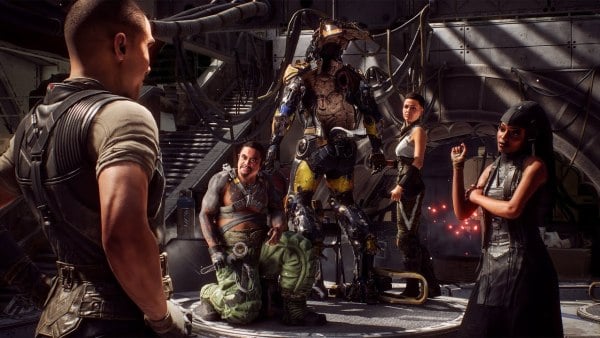
If I went into every minute detail that sets the Destiny’s and Anthem’s game worlds apart, we’d be here all day.
From Destiny’s multitude of playable races to Anthem’s god-like Shapers who (according to backstory) created the world of Anthem in nine days, the number of story aspects that differentiate the games are immeasurable, but here are a few of the more immediately noticeable ones.
Both Destiny and Anthem feature giant, walled cities as hubs. These cities shield their respective populations from dangerous aliens and monsters, but that’s where the similarities end.
Destiny’s hub, The Tower, is a vaguely futuristic fortification that demonstrates how the game takes place in a fantastical future where humanity colonized the stars.
Meanwhile, Anthem’s hub, Fort Tarsis, provides a completely different style of architecture that reflects an alternate world, not a futuristic one despite the Iron Man-like Javelins. Indeed, Fort Tarsis is vaguely Middle Eastern, and Lead Producer Mike Gamble stated in an interview with ComicBook.com the team took inspiration from Middle Eastern structures.
The hub is full of bazaars and bars that evoke memories of Indiana Jones. More importantly, though, Fort Tarsis isn’t the only walled city in Anthem, whereas Destiny’s Last City is literally Earth’s last inhabited major city. While Destiny and Anthem feature worlds strewn with ruins of a bygone era, each paints a different image.
Destiny’s ruins are mostly spaceships and semi-contemporary buildings, crumbling and overgrown with plants that demonstrate the game takes place in the future of a world not unlike our own.
Meanwhile, Anthem’s ruins mostly feature Shaper architecture, which build an underlying mystery that continually asks why the Shapers disappeared.
Moreover, these ruins proclaim that Anthem’s world has little to do with ours. While Destiny players are told what happened to the ruins they find, the Shaper ruins are nothing but questions begging to be answered, possibly with future story DLC.
6 Ways Anthem Isn’t Like Destiny
Endgame Content
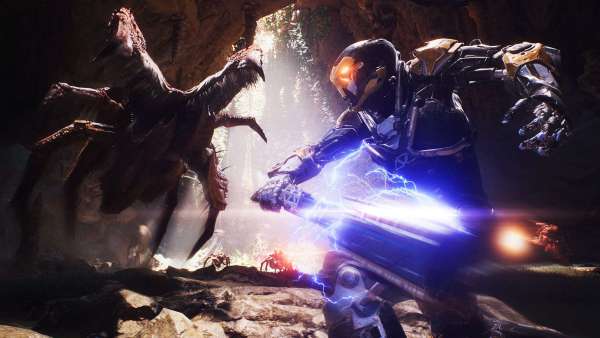
Destiny’s endgame was built with multiplayer in mind, specifically raids and PvP. Once players finish the main story, they unlock several dungeons and raids, each of which has a minimum recommended power level.
Players usually have to equip their strongest gear to meet these requirements, and when they do, they can run through these gauntlets with friends to loot stronger weapons and armor until they are powerful enough to challenge the next dungeon or raid. Then the process starts over again.
Even though PvP is unlocked early in Destiny, the mode is geared towards players who have unlocked all skills, have plenty of powerful weapons, and know Destiny’s mechanics inside and out.
While most PvP modes negate level advantages, some special match types, such as Gambit and Iron Banner, don’t. Players who haven’t reached the endgame will be at a serious disadvantage, so while gamers can join in the PvP action at any time, they are almost guaranteed to be overwhelmed unless they have powerful gear or allies.
One standout piece of Destiny endgame content that isn’t a dungeon or PvP mode is the Black Armory. This relatively new location gives players a series of grindy missions that provide new and powerful weapons. Anthem, on the other hand, has little in the way of endgame content at the moment.
Once players finish the main story, they can participate in randomized Legendary Contracts and three Grandmaster difficulties that exponentially increase the health and damage of enemies. No new Strongholds, just harder versions of missions gamers have already conquered, similar to Adventure mode in Diablo 3.
While Grandmaster modes increase the chances of obtaining Masterwork loot, the strongest in Anthem, gamers have taken to reddit to complain about the Grandmaster grind and the rewards themselves.
However, Destiny has been around far longer than Anthem, so its developers have had more time to produce and release endgame content. As Anthem development continues, BioWare is sure to release new Strongholds, missions, and PvP, but since it’s just starting out, Anthem lacks meaningful endgame content.
